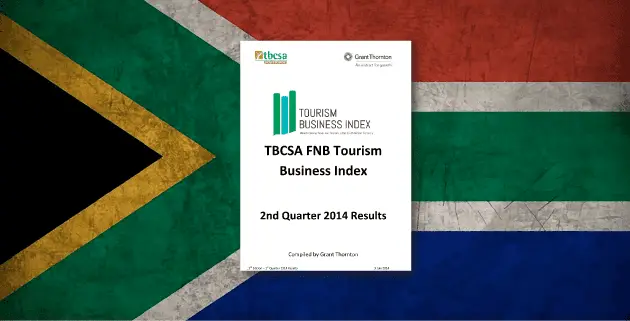10 Steps To Starting Your Own Tourist Transport Business
Our Guide: 10 Steps To Starting Your Own Tourist Transport Business
The following 10 steps are aimed at entrepreneurs who are thinking of entering the tourism industry in South Africa and would like to start a tour or tourist transport business.
While it can be a lucrative enterprise, starting a tourism transport-related business is not as easy as it appears to be. Considering that the safety of tourists is paramount, there is a certain amount of red tape in the tourism transport sector that needs to be complied with. However, by reading the following steps and related links for more information, you will be better prepared for the road ahead.
First off, let’s define what the tourism transport sector actually is. It’s defined as: “any business involved in the transportation of tourists, both local and international, in and around South Africa, including airlines, ships, trains, buses, shuttles, and taxis.” For the purpose of this article, we’ll be focussing on starting a tourist road transport operator business, which excludes taxi operators.
Before we begin, ask yourself this important question:
Do you have what it takes to succeed?
Are you an entrepreneur? Remember that an entrepreneur is a combination of both Thinker and Doer. This is more relevant in tourist transport operations where you have to be creative. Merely buying a vehicle or coach will not be sufficient to run a successful business. Entrepreneurial success depends on the management of your own self. For this, you need certain traits, qualities and behavioural competencies. For example, can you sense an opportunity? Do you have the confidence to take calculated risks? Are you able to take the initiative and mobilise resources?
If your answers to the above questions are yes, then here’s what you’ll need to get started:
Step 1. Get the correct drivers license & permit
Drivers license: Assuming that you already have a Code B drivers license, upgrade to Code C so that you can drive a bus or tour coach. Read more about how to get this here.
Get a PrDP permit: To transport fare-paying passengers or tourists for an income you must have a Professional Driving Permit (PrDP). Read more about how to get this here.
Step 2. Network
There’s an old adage in business: “it’s not so much about what you know, as it is about who you know.” For this reason, attend as many tourism-related networking events as you can. Meet people who own tourist transport businesses, ask questions, and above all, listen more than you speak. If you are offered a job as a driver (either full time or part-time) grab it – it’s the quickest way to learn the ropes.
You should also try to meet tour operators, travel agents and DMCs (Destination Management Companies) – these are the people who bring tourists into the country and may be willing to subcontract your services. And don’t forget about tourist guides and hotel concierges – they have a wealth of knowledge and information.
You should also follow the social media accounts of tourism transport providers, travel trade exhibitions, conferences and associations to keep abreast of developments and see when opportunities present themselves. The Southern Africa Tourism Services Association (SATSA) is a good place to start – they have regular chapter meetings to which non-members are often invited. Follow their Facebook page here.
Subscribing to tourism media newsletters is a good source for keeping up to date on the industry – you can do that free of charge here. The SME Movement is also worth joining for inspiration and information about access to markets.
Step 3. Register your business
To be taken seriously in this industry you will need to be a legal entity. The sooner you do this the better as many trade associations, such as SATSA, will only accept members who are registered legal entities and have been active for a minimum period of two-years.
You can register a business name and company yourself relatively cheaply through the Companies and Intellectual Property Commission (CIPC) website here.
Step 4. Get a business plan
You won’t reach your dream without planning. A business plan is essential to gain financing or investors for your business. Read more about this in our ‘Beginners Guide To Starting A Tourism Business.’ You will also need to understand the implications of VAT in the Tourism Industry.
In addition, Business Partners has a very useful SME Toolkit section on how to write a business plan with templates and examples.
Step 5. Get finance
Now that you have a business plan, you’ll need finance. Besides banks, there are other options to raise finance for your business. Check out the aforementioned Business Partners website – they’re a specialist risk finance company that provides customised financial solutions, sectoral knowledge, and mentorship for formal small and medium enterprises (SMEs) in South Africa and selected African countries, namely Kenya, Malawi, Namibia, Rwanda, Uganda and Zambia.
Step 6. Get a permit
Assuming that you’ve successfully completed the above 5 steps and are now the proud owner of a vehicle, you’ll need to get a permit to operate it for the purpose of transporting tourists as fare paying passengers.
This is done through the Department of Transport (DOT) in the province in which you intend to operate your business. See Step 7 below on how to go about getting this.
Step 7. Get accredited
Accreditation is the process of being officially recognised as someone having a particular status or being qualified to perform a particular activity. You need to be seen as being a credible service provider. By definition, the word Credibility relates to the quality of being believable or worthy of trust. Read more about the Importance of Credibility in Tourism.
The DOT has published Accreditation Guidelines for SA Tourist Transport Operators in order to provide general assistance in understanding the accreditation and licensing requirements as stipulated in the National Land Transport Act (2009). The Act requires tourist transport operators in South Africa to be accredited to provide tourist transport services. It’s important that you download this document as it also contains all the regulatory requirements plus a list of all Provincial Operating License Boards.
In addition, if your business is at least 51% black-owned, get Broad-Based Black Economic-Empowerment (BBBEE) verification. For more information on this, visit beerated.org and the dti.gov.za website.
Step 8. Get insurance
It’s probably best if you get this before taking steps 6 & 7 above, considering that vehicle and liability insurance are essential requirements for tourist transport services. Read more about Travel Trade Insurance in our 7-part series.
Step 9. Get software
Once your business is up and running, you’ll soon find that managing workflow and producing quotes is hugely time-consuming. For this reason, you’ll need software to simplify the process and give your clients a professional look and feel. Read this article for tips on Selecting Tour Operator Software.
Step 10. Get the right mindset
And, finally, you’ll need to maintain the right mindset. As you’ll soon find out, running a business is a big challenge. Even the most modest enterprise takes hard work and dedication to thrive. Approaching it with the right frame of mind is vital to your long-term success. Here’s an overview of where your head needs to be if you want to build your business into something great: The Right Mindset For Running Your Own Business.





